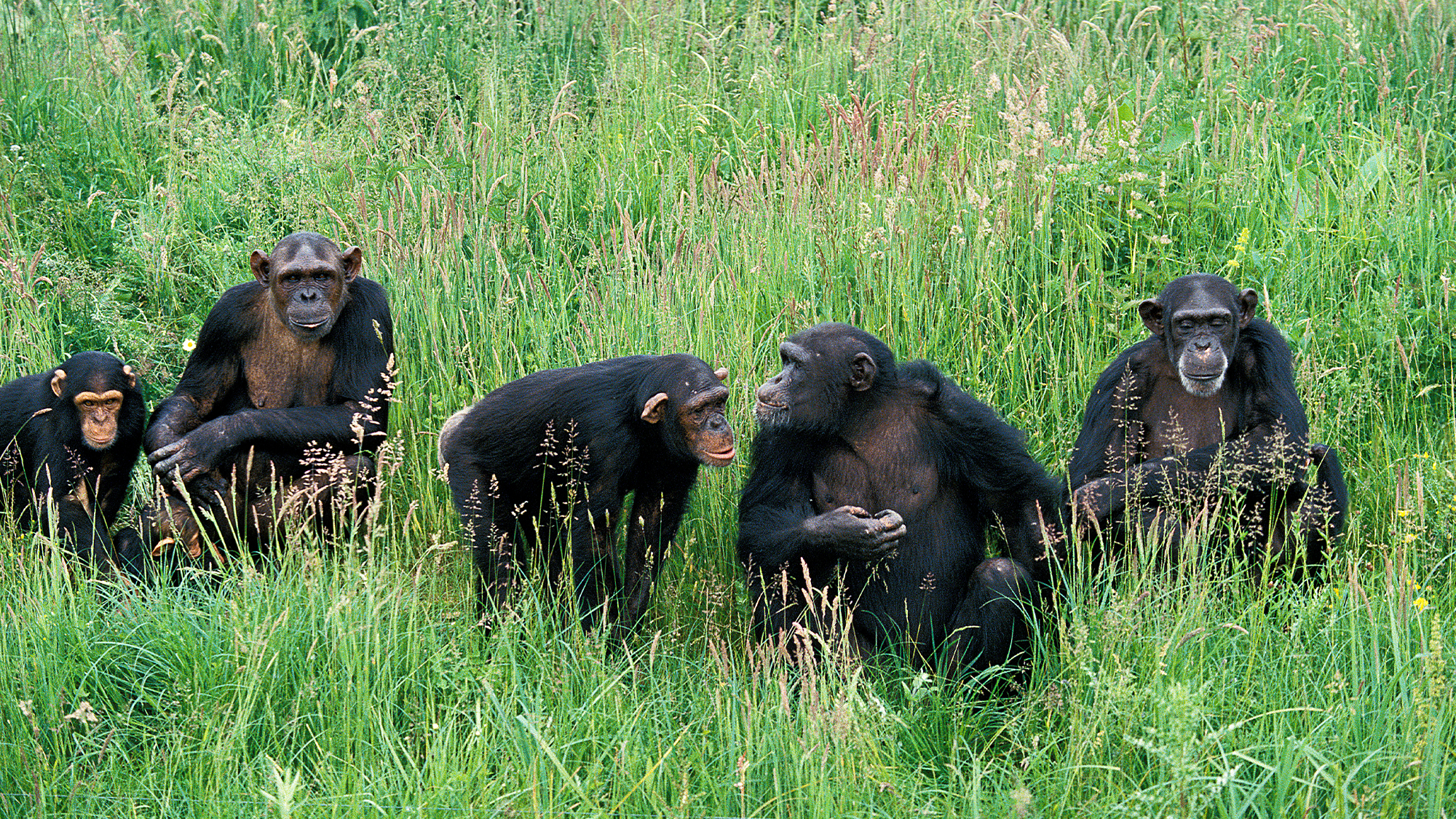

To get our points across, humans use numerous gestures and shift the speed and tone of our speech. We are not the only members of the animal kingdom to do this. According to new observations from a study published July 22 in the journal Current Biology, chimpanzees may share our pattern of rapidly taking turns to speak and, sometimes, even interrupting each other.
“While human languages are incredibly diverse, a hallmark we all share is that our conversations are structured with fast-paced turns of just 200 milliseconds on average,” study co-author and University of St Andrews primatologist Catherine Hobaiter said in a statement. “But it was an open question whether this was uniquely human, or if other animals share this structure.”
[Related: Popular chimpanzees set hand-holding trends for the whole group.]
In the study, the team collected data on chimpanzee “conversations” across five wild communities in East Africa. Their dataset represented more than 8,500 gestures for 252 individual chimpanzees. They then used computer software to measure the timing of turn-taking conversational patterns.
Fourteen percent of communicative interactions included an exchange of gestures between two individual interactions. Most of these included a two-part exchange, but some included up to seven.
“We found that the timing of chimpanzee gesture and human conversational turn-taking is similar and very fast, which suggests that similar evolutionary mechanisms are driving these social, communicative interactions,” study co-author and University of St Andrews Ph.D student Gal Badihi said in a statement.

In general, the researchers saw a similar timing observed in human conversation–short pauses between a gesture and then a gestural response at about 120 milliseconds. Some of the behavioral responses to gestures were slower.
“We did see a little variation among different chimp communities, which again matches what we see in people where there are slight cultural variations in conversation pace: some cultures have slower or faster talkers,” Badihi said.
“In humans, it is the Danish who are ‘slower’ responders, and in Eastern chimpanzees that’s the Sonso community in Uganda,” said Hobaiter.
This connection between human and chimpanzee face-to-face communication indicates that there are some underlying rules in communication in primates. The team notes that these structures could trace back to a communication mechanism in a shared ancestor. Chimpanzees and humans also may have arrived at similar communication strategies as a way to enhance their coordinated interactions and manage competition for communicative “space.” The findings also suggest that our communication may not be as unique as we once thought.
[Related: Why do humans talk? Tree-dwelling orangutans might hold the answer.]
“It shows that other social species don’t need language to engage in close-range communicative exchanges with quick response time,” Badihi said. “Human conversations may share similar evolutionary history or trajectories to the communication systems of other species suggesting that this type of communication is not unique to humans but more widespread in social animals.”
The team would like to explore why chimpanzees have conversations to begin with. They believe that chimpanzees often rely on gestures to ask something of another chimp.
“We still don’t know when these conversational structures evolved, or why!” Hobaiter said. “To get at that question we need to explore communication in more distantly related species—so that we can work out if these are an ape-characteristic, or ones that we share with other highly social species, such as elephants or ravens.”
